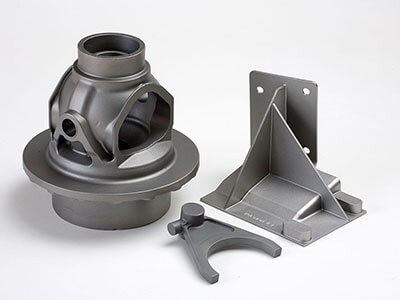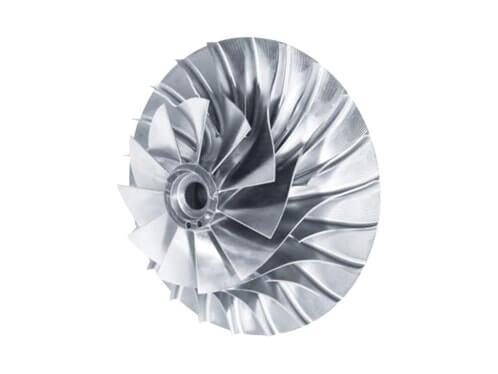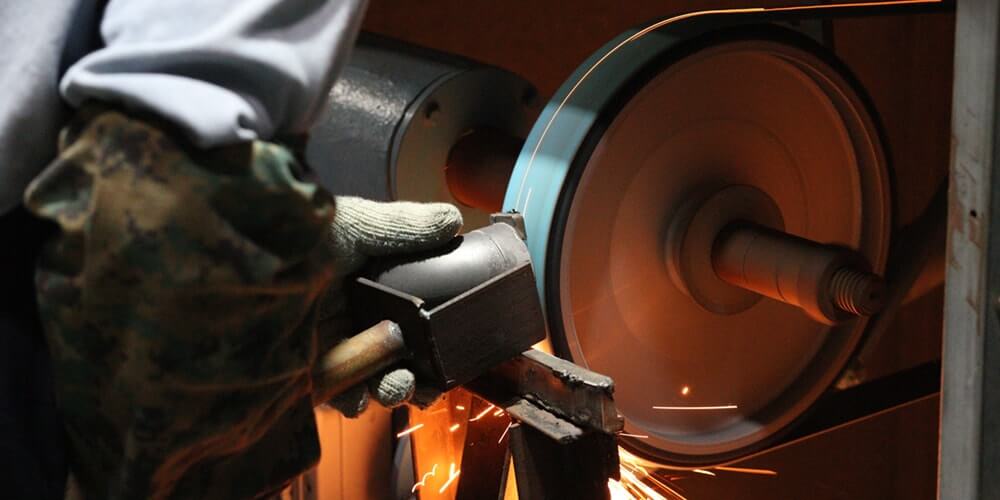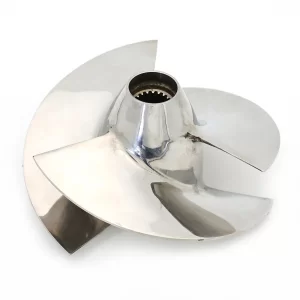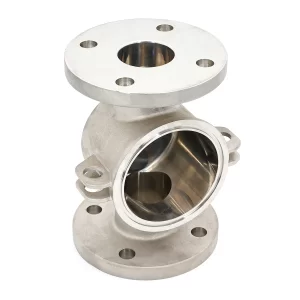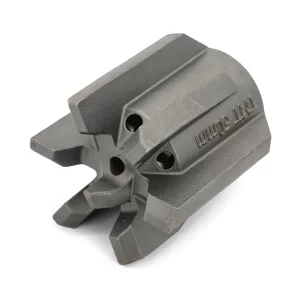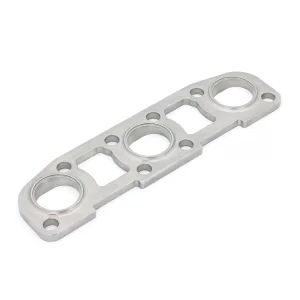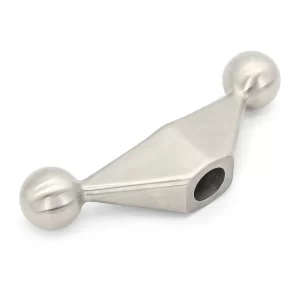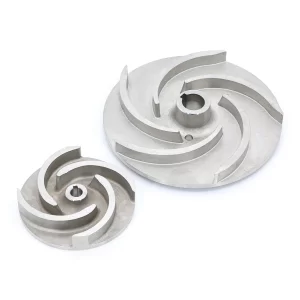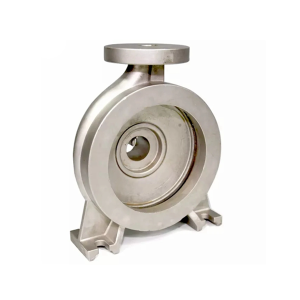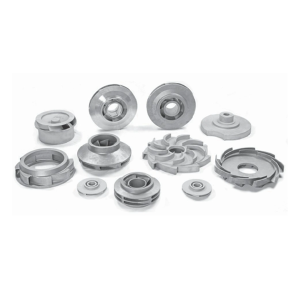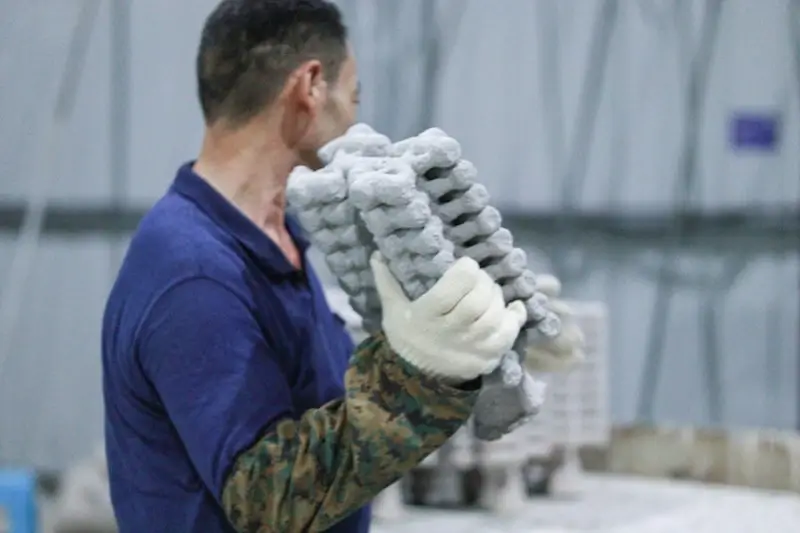Ladies and gentlemen, welcome to the thrilling world of carbon steel precision casting!
Carbon steel is a type of steel that contains carbon as its primary alloying element. It is an alloy of iron and carbon, with varying amounts of other elements such as manganese, silicon, sulfur, and phosphorus depending on the grade. Carbon steel can be used for precision casting, especially for parts that require high strength, wear resistance, and durability. The process involves creating a wax pattern of the desired part, coating the pattern with a ceramic shell, and then heating the assembly to remove the wax and harden the ceramic shell. Molten carbon steel is then poured into the ceramic shell to produce the final cast part.
Characteristics of Carbon Steel
Carbon steel can be classified into three main categories: low-carbon steel, medium-carbon steel, and high-carbon steel.
- Low carbon steel: Also known as mild steel, it typically contains 0.05% to 0.25% carbon. This category of carbon steel is known for its excellent ductility, machinability, and weldability, making it ideal for structural applications, automotive parts, and pipelines.
- Medium carbon steel: It contains 0.3% to 0.6% carbon and offers a balance between ductility and strength. Medium carbon steels are used for applications requiring higher strength and wear resistance, such as gears, crankshafts, and rail components.
- High carbon steel: With a carbon content between 0.6% and 1.5%, high carbon steel is the strongest and hardest among the three categories. This type of steel is used for cutting tools, springs, and high-strength wires due to its excellent wear resistance and hardness. However, it is more brittle and less ductile compared to the other two types.

Properties of carbon steel? Oh, it has quite the personality:
- Strength: Carbon steel exhibits good tensile and compressive strength, which varies based on the carbon content. Higher carbon content results in higher strength, making it suitable for applications requiring wear resistance and durability.
- Ductility: Low carbon steels possess excellent ductility, allowing them to be drawn, bent, or stretched without breaking. This property makes low carbon steel ideal for forming and shaping processes. However, ductility decreases as carbon content increases.
- Weldability: Low carbon steel is easy to weld due to its lower carbon content, making it ideal for fabrication and joining processes. Medium and high carbon steels can also be welded, but they require more care and preheating to avoid brittleness or cracking at the weld joints.
- Machinability: Carbon steel, particularly low carbon steel, is relatively easy to machine, which makes it suitable for a wide range of manufacturing processes. Higher carbon steels can be machined as well, but they require more advanced techniques and cutting tools due to their increased hardness.
- Hardness: The hardness of carbon steel is directly proportional to its carbon content. High carbon steels are harder and more wear-resistant than low and medium carbon steels. However, increased hardness often comes at the cost of reduced ductility and toughness.
- Heat treatment: Carbon steel responds well to heat treatments like annealing, quenching, and tempering. These processes can modify the steel’s mechanical properties, such as strength, hardness, and ductility, to meet specific application requirements.
- Corrosion resistance: Carbon steel has limited corrosion resistance compared to stainless steel or other corrosion-resistant alloys. It is prone to rust when exposed to moisture and oxygen. However, coatings, surface treatments, or painting can improve its corrosion resistance.
- Magnetic properties: Carbon steel is ferromagnetic, which means it is attracted to magnetic fields. This property makes carbon steel suitable for various applications, such as magnetic components and electromechanical devices.
- Cost-effectiveness: Carbon steel is generally less expensive than other types of steel, such as stainless steel or alloy steels. Its lower cost, combined with its versatile properties, makes it an attractive choice for a wide range of applications.
Here is the comparison table for your better understanding of them:
| Property | Low Carbon Steel | Medium Carbon Steel | High Carbon Steel |
|---|---|---|---|
| Carbon content | 0.05% – 0.25% | 0.3% – 0.6% | 0.6% – 1.5% |
| Strength | Low to moderate | Moderate to high | High |
| Hardness | Low to moderate | Moderate to high | High |
| Ductility | High | Moderate | Low |
| Toughness | High | Moderate | Low to moderate |
| Weldability | Excellent | Good, with precautions | Poor, with more precautions and pre/post heat treatments |
| Machinability | Excellent | Good | Moderate, may require special cutting tools |
| Corrosion resistance | Limited, needs protection | Limited, needs protection | Limited, needs protection |
| Heat treatment response | Low | Moderate to good | Good |
| Magnetic properties | Ferromagnetic | Ferromagnetic | Ferromagnetic |
| Typical applications | Structural, automotive parts, pipelines | Gears, crankshafts, rail components | Cutting tools, springs, high-strength wires |
Please note that the properties listed in the table are generalizations, and specific carbon steel grades may exhibit different characteristics based on their exact composition and processing. Always consult material datasheets and manufacturer recommendations when selecting the appropriate carbon steel grade for your application.
Why Carbon Steel Precision Casting?
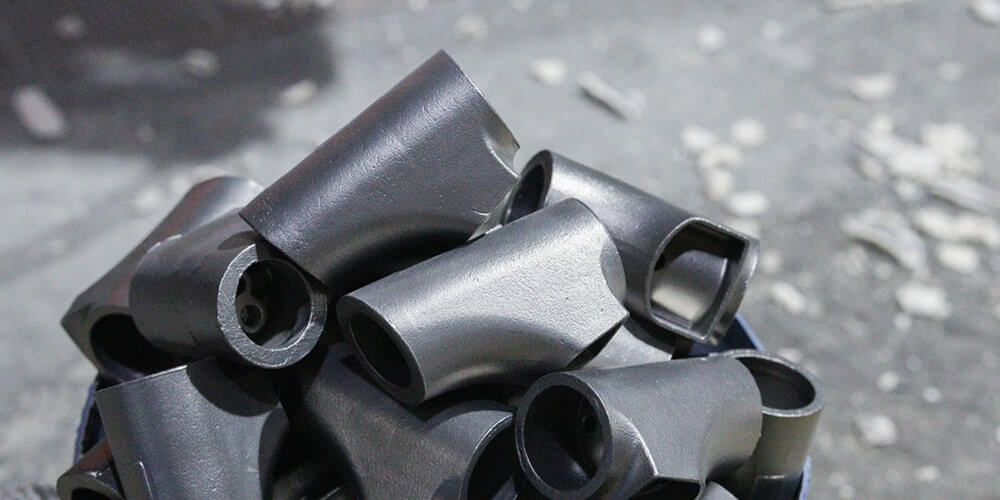
Precision casting, also known as investment casting or lost-wax casting, offers several advantages for producing complex, high-quality components. Some of the reasons to choose carbon steel precision casting include:
- Design complexity: Precision casting allows for the production of intricate and complex parts with high dimensional accuracy, which is essential for many industrial applications. Carbon steel is an excellent candidate for this process, as it can take on fine details and maintain the required mechanical properties.
- Near-net-shape manufacturing: Precision casting produces parts that are close to their final shape, reducing the need for extensive machining or secondary operations. This advantage can result in cost savings, shorter lead times, and reduced material waste.
- Surface finish: Carbon steel precision castings typically have a smooth surface finish, which reduces the need for further polishing or finishing processes. A smoother surface can also improve the performance of the final component in various applications, such as reducing friction or wear.
- Material properties: Carbon steel offers a range of mechanical properties, such as strength, ductility, and hardness, depending on its composition. Precision casting allows manufacturers to select the appropriate grade of carbon steel for a specific application, ensuring the desired properties are achieved in the final product.
- Wide range of applications: Carbon steel precision casting can be used for various industries, including aerospace, automotive, construction, and manufacturing, among others. The versatility of carbon steel and the precision casting process makes it suitable for a wide array of components.
- Cost-effectiveness: Carbon steel is generally more affordable than other materials, such as stainless steel or high-performance alloys. By using carbon steel for precision casting, manufacturers can achieve the desired component properties at a lower cost.
However, there are some challenges associated with carbon steel precision casting, such as the material’s reactivity with oxygen and the potential for surface defects or inclusions. Proper techniques and careful control of the casting environment are necessary to minimize these issues.
How Does Carbon Steel Precision Casting Process Work
Carbon steel precision casting process involves creating a wax pattern, building a ceramic shell, melting out the wax, pouring molten carbon steel into the mold, and then removing the ceramic shell to reveal the final casting. This process allows for the production of complex, high-precision components in carbon steel with excellent surface finish and mechanical properties.
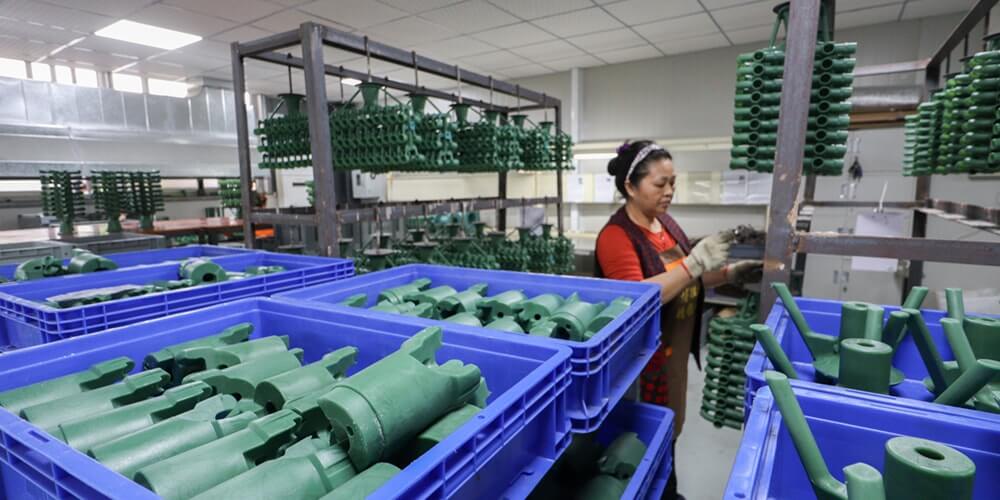
Here’s an overview of the steps involved in the carbon steel precision casting process:
- Creation of the wax pattern: A detailed wax pattern of the desired part is created, typically using an injection molding process. The pattern should be slightly larger than the final part to account for shrinkage during the casting process. This wax pattern replicates the exact geometry of the final part, including any intricate details and undercuts.
- Assembly of the wax pattern: The wax patterns are then attached to a central wax sprue or runner system, creating what is known as a “tree.” This assembly allows multiple parts to be cast simultaneously and ensures a proper flow of molten metal during the casting process.
- Building the ceramic shell: The wax pattern assembly is dipped into a liquid ceramic slurry and then coated with a layer of fine refractory particles. This process is repeated several times, with the assembly allowed to dry between each coating. The ceramic layers build up to create a robust ceramic shell around the wax pattern.
Wax patterns coated with ceramic shell - Wax removal: The ceramic shell is then heated in an oven or furnace to melt and remove the wax, leaving behind a hollow ceramic mold. This step is critical, as any residual wax can create defects in the final casting.
- Preheating the mold: The ceramic mold is heated further to strengthen the shell, remove any remaining moisture, and preheat it to the appropriate temperature for casting. Preheating the mold helps to reduce thermal shock when the molten metal is poured and promotes a smoother, defect-free casting.
- Pouring the molten metal: The molten carbon steel is poured into the preheated ceramic mold. As the steel cools and solidifies, it takes on the exact shape of the wax pattern, including fine details and complex geometries.
- Removal of the ceramic shell: After the metal has cooled and solidified, the ceramic shell is carefully removed, typically by using a combination of mechanical methods (vibratory or hammering) and chemical leaching. This step reveals the carbon steel casting, still attached to the central runner system.
- Cutting and finishing: The individual castings are cut from the runner system, and any remaining sprue or gate material is removed. The cast parts may undergo further finishing processes, such as grinding, polishing, or heat treatment, to achieve the desired surface finish and mechanical properties.
Worker trimming the casting parts - Inspection and quality control: The final carbon steel precision castings are inspected for dimensional accuracy, surface finish, and any potential defects. Non-destructive testing methods, such as X-ray, ultrasonic, or magnetic particle testing, may be used to ensure the quality of the castings.
Applications of Carbon Steel Casting
The versatility of carbon steel, combined with the precision and complexity achievable through casting processes, makes it a popular choice for a wide range of industries and applications. Some common applications of carbon steel casting include:
Automotive
Carbon steel castings are used in various automotive components, such as engine blocks, transmission housings, suspension components, brake parts, and steering components. The strength and durability of carbon steel make it an ideal material for these high-stress applications.
Construction
Carbon steel castings are used for constructing buildings, bridges, and other infrastructure projects. They are often used for producing structural components, such as beams, columns, and brackets, as well as hardware, like hinges and fasteners.
Railways
The railway industry uses carbon steel castings for manufacturing various components, such as rails, wheels, and track fittings. Carbon steel offers a combination of strength, wear resistance, and durability required for these high-stress applications.
Agriculture
Carbon steel castings are used in the production of agricultural machinery and equipment, such as tractors, plows, harrows, and seeders. These components require a balance of strength, wear resistance, and toughness to withstand the harsh operating conditions.
Mining and earthmoving
Heavy equipment used in mining and earthmoving operations, such as excavators, loaders, and dump trucks, often rely on carbon steel castings for their structural components and wear parts. Carbon steel offers the strength and durability required for these demanding applications.
Valves and pumps
Carbon steel castings are used to produce various types of valves, such as gate valves, ball valves, and check valves, as well as pump components, including impellers, housings, and casings. These parts must withstand high pressures and stresses while maintaining precise dimensional accuracy.
Gears and power transmission
Carbon steel castings are used to produce gears, sprockets, and other power transmission components for various industries. Medium carbon steels, in particular, offer an excellent balance of strength, wear resistance, and machinability for these applications.
Oil and gas
Carbon steel castings are used in various components of the oil and gas industry, including drilling equipment, pipelines, and valves. The strength and durability of carbon steel make it suitable for the demanding conditions in this sector.
Marine
Carbon steel castings are used in the production of various marine components, such as anchors, chain links, and propellers. These parts require a balance of strength, corrosion resistance, and durability to withstand the harsh marine environment.
Carbon Steel Precision Casting Cost Analysis
Performing a detailed cost analysis of carbon steel precision casting requires considering various factors that influence the overall cost. Some of these factors include:
- Material cost: The price of carbon steel fluctuates based on market conditions, supply, and demand. In general, carbon steel is less expensive than other materials like stainless steel or high-performance alloys, which contributes to the cost-effectiveness of carbon steel precision casting.
- Tooling cost: The creation of wax patterns for the precision casting process requires the use of injection molds or dies. The cost of these tools depends on the complexity of the part and the required precision. The initial tooling cost may be relatively high, but it can be distributed across the production volume, resulting in a lower cost per part for larger production runs.
- Labor cost: The precision casting process is labor-intensive, as it involves multiple steps, such as creating wax patterns, building ceramic shells, and removing the castings from the molds. The labor cost depends on the level of automation, local wages, and the complexity of the part.
- Energy cost: The precision casting process requires significant energy consumption for melting the carbon steel, heating the ceramic molds, and maintaining the necessary environmental conditions. Energy costs vary depending on the location and the efficiency of the equipment used.
- Finishing and post-processing costs: Depending on the application, the cast parts may require additional finishing processes, such as grinding, polishing, or heat treatment. These processes add to the overall cost of the cast parts.
- Quality control and inspection costs: Ensuring the quality of the precision cast parts requires thorough inspection and testing, which can include dimensional checks, surface finish evaluations, and non-destructive testing methods. The cost of these inspections contributes to the overall cost of the casting process.
- Waste and scrap rate: The precision casting process generates waste in the form of excess material, runners, and potentially defective parts. The cost of managing and disposing of this waste, along with the cost of reworking or scrapping defective parts, must be factored into the overall cost analysis.
- Production volume: The cost per part tends to decrease with larger production volumes, as the fixed costs, such as tooling and setup, can be distributed across more units. High-volume production runs can achieve economies of scale, reducing the overall cost per part.
The cost analysis of carbon steel precision casting involves considering various factors, such as material cost, tooling cost, labor cost, energy cost, finishing and post-processing costs, quality control and inspection costs, waste and scrap rate, and production volume. The overall cost-effectiveness of carbon steel precision casting depends on the specific application, the complexity of the part, and the production volume.
Example
Here is a rough example to give you an idea of how costs may break down for a carbon steel precision casting product.
Let’s assume you’re looking to produce a carbon steel gear with a diameter of 100mm and a weight of 1kg. The factors to consider when estimating the cost are:
- Material cost: Assuming the cost of carbon steel is around $0.80/kg, the material cost for a single gear would be approximately $0.80.
- Tooling cost: The cost of creating the injection molds for the wax pattern may range between $5,000 and $10,000. If you plan to produce 5,000 gears, the tooling cost per gear would be between $1.00 and $2.00.
- Labor cost: Let’s assume that the labor cost is $20/hour, and it takes 0.1 hours (6 minutes) of labor to produce one gear. The labor cost per gear would be approximately $2.00.
- Energy cost: Assuming an energy cost of $0.10/kWh and a total energy consumption of 0.5 kWh per gear, the energy cost per gear would be approximately $0.05.
- Finishing and post-processing costs: If the gears require additional finishing processes, such as grinding or heat treatment, the cost could be an additional $1.00 to $3.00 per gear.
- Quality control and inspection costs: Assuming that the inspection cost is $0.50 per gear, the total inspection cost for 5,000 gears would be $2,500.
- Waste and scrap rate: Let’s assume a 5% scrap rate. In this case, the cost associated with waste and scrap would be 5% of the total cost per gear.
Here’s a tabular cost breakdown for the carbon steel gear:
| Cost Factor | Estimated Cost per Gear |
|---|---|
| Material | $0.80 |
| Tooling | $1.00 – $2.00 |
| Labor | $2.00 |
| Energy | $0.05 |
| Finishing | $1.00 – $3.00 |
| Quality Control | $0.50 |
The total cost per gear would range from approximately $5.35 to $8.35 before considering the 5% waste and scrap rate. Including the waste and scrap rate, the final cost per gear would be between $5.62 and $8.77.

Please note that these are rough estimates and may not accurately represent the actual cost for your specific product. The cost can vary significantly based on the complexity of the part, production volume, location, and other factors. It’s essential to consult with a casting service provider like SIPX Casting for a more accurate cost estimation tailored to your specific project.
Conclusion
Carbon steel and precision casting are truly a match made in foundry heaven. This powerful combination is an excellent choice for producing complex, high-quality components with outstanding mechanical properties and surface finish.
At SIPX Casting, we specialize in carbon steel precision casting services, offering unparalleled expertise and state-of-the-art technology to create high-performance parts tailored to your unique requirements. Our dedication to quality and precision ensures that your components will meet the highest industry standards, making SIPX Casting the go-to choice for all your carbon steel precision casting needs. Partner with us to experience the benefits of carbon steel precision casting and unlock the full potential of your projects.
